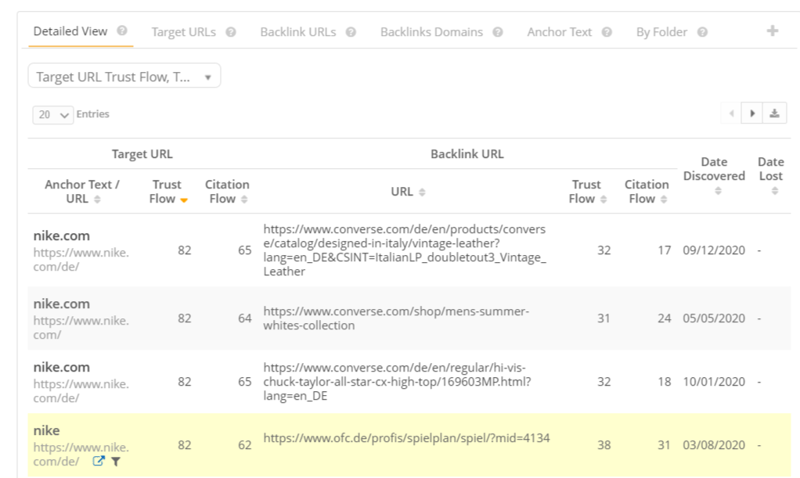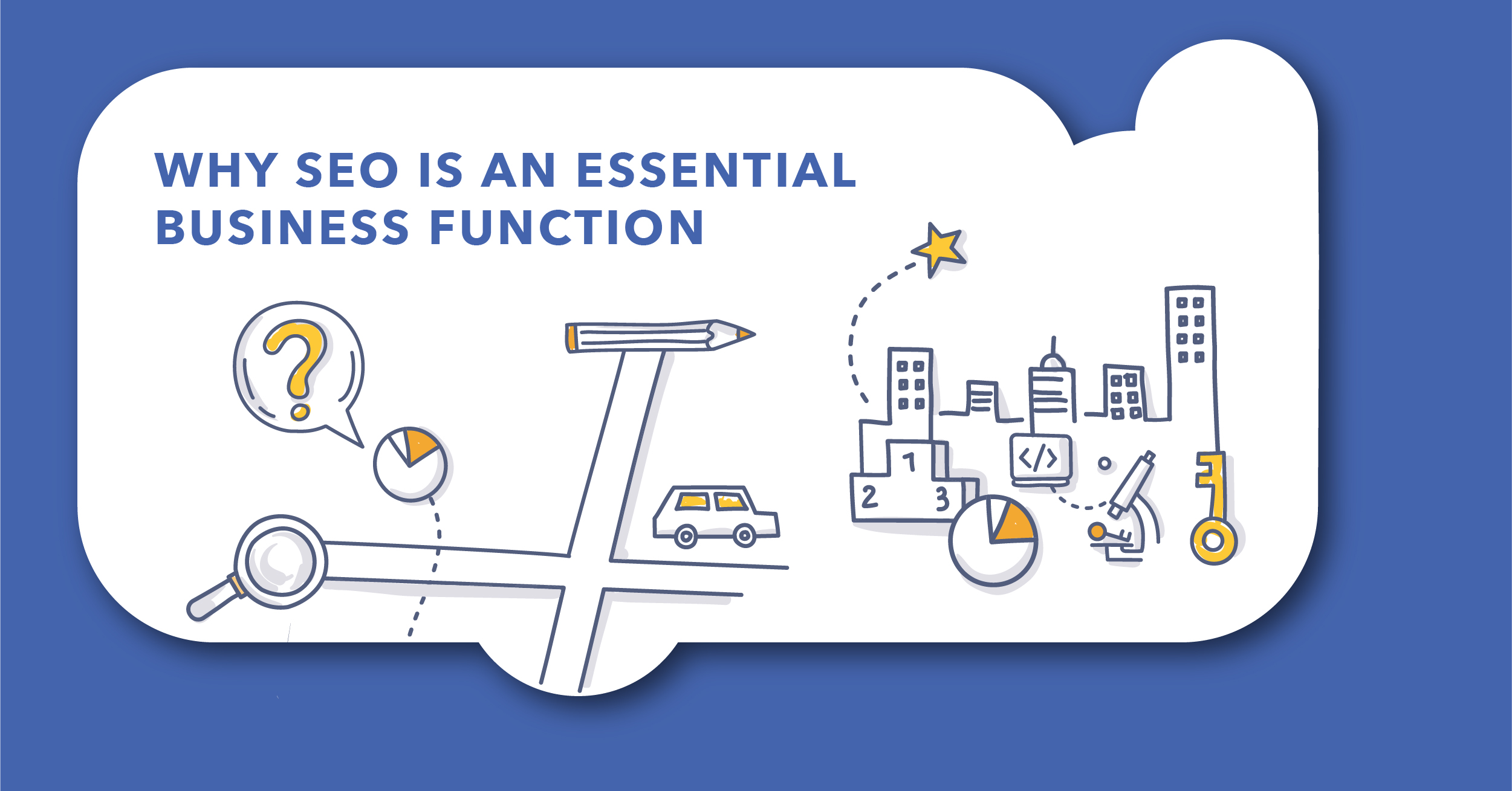Are you wondering how to manage your backlinks? Do you struggle with developing an effective backlink management process?
Given how critical links are to your site's SEO, it's wise to have an approach to managing your link profile.
Just as authoritative content helps you to rank for relevant keywords, backlinks also reassure the search engine of page authority. It comes as no surprise, then, how much focus some SEOs put into building and managing their external link portfolios.
In this post, I’ll show you a solution for managing these backlinks in four different stages: protect, review, grow, and analyze. You’ll also learn why an enterprise-level platform offers the biggest opportunity in these areas and how to use it to manage backlinks to benefit your site. You can expect to learn:
- Why You Should Manage Your Backlinks in the First Place
- Different Types of Links
- Why Use an Enterprise-Level Platform to Manage Backlinks
- Metrics You Need to Track in Your Link Profile
- How to Manage Your Backlinks Using an Enterprise Platform (Updated)
- What SEO Tools Do You Need to Manage Backlinks? - Recently Added!
Why Manage Links?
The answer seems simple, doesn’t it? Backlinks remain one of Google’s most important ranking signals.
After all, Google looks at the quality of backlinks to establish site authority and, in turn, its rankings.
Links remain a fundamental part of the web. Nearly every attempt to list SEO ranking factors includes backlinks as one of the drivers of a site's rankings and search visibility.
Even Google confirmed links to be one of the three most important ranking factors, after content and RankBrain.
There are other reasons, too, why you should pay attention to how your site is linked to.
Link quality. It’s actually relatively easy to build links, even today. Th9e problem, however, is that most of them would probably have extremely poor quality. They could very well impact your search visibility – most likely in a negative fashion.
Which leads us to anchor text. The clickable text of your hyperlink needs to contain terms that are relevant to your linked page, rather than including unrelated terms in your anchor text. The best anchor text tells users that if they click that link, they will get the information associated with that term.
Regular backlink management gives you the opportunity to spot and eradicate potentially harmful links early.
Broken links. A link pointing to a non-existing URL doesn’t help your SEO either. It provides poor user experience to anyone trying to access the content the link promises but lands instead on a 404 page, for example.
Here’s the challenge – backlink management of the entire profile and using it to boost search visibility requires a lot of data analysis and the insights to develop a plan.
And this is where having an enterprise-level platform will help.
Different Types of Links
When we think of links, we, mostly, refer to references within a page's copy that, when clicked, open another relevant resource. Like this link to a page explaining what are backlinks, for example.
But there is more to links than that. Granted, text links, wrapped in the <a href> tag in the HTML code are the most common. However, your link profile can contain other types of links as well.
- Image Links. Images on their own tell Google nothing about the link or the page. But if an image is used as a link, the search engine will use the text in ALT and TITLE tags to understand the context of the link. In this case, each tag will work much like an anchor text for the link.
- JS Links. Links generated with JavaScript are not always crawlable by Google, and as such, may not always work for your benefit. That said, these links, if done well, can also send authority to your site.
- Nofollow Links. The "nofollow" attribute on a link tells crawlers not to follow the link, and focus on other pages in the site's architecture instead. When it comes to external links, the "nofollow" attribute tells the search engine not to pass any link equity to the linked page, reducing the impact of the link on its authority. That said, the search engine also announced that it is using nofollow links as a hint regarding the site's authority.
Why Use an Enterprise-Level Platform to Manage Backlinks
The web is big - truly, extensively big. Trying to stitch together any sizeable amount data to connect how it's linked together is challenging. Not only is it massive, but these sources can be disparate and of course grow exponentially with the web.
An enterprise-level platform can pull all of this dispersed information into one place, helping you to monitor backlinks by giving you both a birds-eye and detailed view of your strategies. This, in turn, correlates information from different strategies and tactics to inform new link building ideas and campaigns.
It works the other way around too. An enterprise SEO platform can bring link data into any other strategy as well.
For example, when identifying new topic ideas, analyze the most linked-to content to identify:
- Top characteristics of the most referenced pages
- Content types that generate the most links
- Types of websites that link to your content the most, which informs your outreach strategy.
So, let’s see how to use an enterprise platform to achieve it all, specifically.
What Metrics Do You Need to Track in Your Link Profile?
Before I show you how to manage the link profile, let's discuss the metrics you'll be paying close attention to.
I recommend you evaluate each link for the following information:
When was the backlink discovered? This metric might not indicate when the link went live, actually. However, it will tell you, roughly, when it became obvious (and, most likely, noticed by Google.)
What is the referring domain? In short, who is linking to you. Reviewing the linking URL will help you spot many potentially spammy links and eliminate them before they cause any problems to your search visibility. You can use additional metrics like Trust Flow to establish the value of the referring domain.
What is the anchor text used? Does it relate to the linked content or contains generic phrases like "click here." I agree that you have not much influence over the anchor text. Having said that, I have had situations where I asked the linking site to amend it to match my page better and they did.
Is the link dofollow or nofollow? Although, Google uses both (although in different ways,) it's good to pay attention to how many dofollow and nofollow links you acquire.
 (A backlinks report in seoClarity's Research Grid.)
(A backlinks report in seoClarity's Research Grid.)
How to Manage Your Backlinks Using an Enterprise Platform
Backlink management consists of four, simple stages:
Each delivers separate outcomes, so let’s go through them in turn.
Note, for this walk-through; I’m going to use our enterprise SEO platform, seoClarity to detail its link building and management capabilities.
Stage #1. Protect Existing Links
Links are an invaluable asset. Losing high-quality backlinks, especially if it happens faster than you can manage to acquire new links, will always have a negative effect on your visibility.
Unfortunately, there are many different ways in which the above could happen.
And so, the first stage of managing your backlink profile is protecting the assets you already have.
In seoClarity, you do this by setting up alerts to notify you when you lose a link, or something else happens to a resource pointing to your site.
Of course, you won’t be able to protect all of your links. After all, websites close down. Webmasters regularly remove outdated pages, too. And some simply decide to reference other sources instead, removing your link in the process.
But there are also many situations where you could revive a lost link. For one, a webmaster might not even realize a problem with a page or server. A quick notification could help republish it, bringing your link back.
Stage #2. Review Incoming Links
New links reveal plenty about your strategies and how the web sees your content.
For example, analyzing fresh backlinks will help identify what content resonates with your audience the most. That’s because a constant growth of links to a page signifies that other webmasters find it:
- Authoritative and worthy of sharing with their readers
- You’re providing the insights others find reliable and engaging.
- Relevant and expanding their content.
Analyzing such content further could yield insight into what makes them consider this content link-worthy. Replicating that on other pages could increase their chances of acquiring more organic links.
This is where it pays off to manage links through an enterprise-level platform.
A platform allows you to combine dispersed data and insights from multiple sources into one place. In this case, you could combine fresh link data with other data points for additional insights into:
- Which of your existing pages to promote further to gain more links
- What pages relevant webmasters find authoritative. And what goes with it, which assets outreach to them with next.
Stage #3. Build More Links With Link Building Strategies
Part of the backlink management process revolves also around identifying and expanding your link profile by building more links.
There are countless strategies that can help a site acquire more links. The most popular and effective are:
- Submitting guest posts to top-industry sites
- Digital PR and outreach for links. This can take the form of pitching guest posts to webmasters or asking them to include a link to your content in an existing article
- Finding brand mentions without a link and asking those sources to provide the reference to the website as well.
- Reclaiming name mentions. In this strategy, you find references of key people in the company, and ask those sources to also add a link.
- Content syndication.
- Creating listings in various business directories and associations.
- Securing links on industry's resource pages.
- Sending out products for reviews.
- Participating in forum or Quora discussions and including links in answers.
- Creating linkable assets that others will want to link to.
- Appearing on podcasts or giving interviews and much more.
Stage #4. Competitor Backlink Analysis
Another way to identify new potential link opportunities is by evaluating the competitors' link profiles. To do so, you follow practically the same process as you would when auditing your own backlinks.
Auditing their link profiles reveals specific strategies that delivered exponential results. It might have been an infographic they’ve promoted, a long-form content, ultimate guide, the opportunities are many. Each industry tends to have specific patterns on what is shared — think white papers vs selfies.
An enterprise platform helps correlate many data points to identify their most successful strategy.
Inspecting Industry Links. Similarly, auditing top sites can show you how links are distributed in the industry. From types of links to assets they point to could spark ideas for long-term strategies to build up your profile.
When researching competitors' backlinks, pay particular attention to:
- The type of links your competitors have,
- Their link profile growth (suggesting how much effort they put into link building,) and
- What anchor texts they use, revealing for what keywords and topics they want to be discovered the most.
seoClarity's backlink analysis tool, Link Gaps, makes the process of uncovering optimal backlink opportunities a breeze by automatically comparing your and your competitor's link profiles. It then determines which sites link to your competitors and not to you and helps you prioritize the most relevant referring domains to target based on keyword overlap.
Recommended Reading: How to Conduct Link Gap Analysis for Enterprise SEO
Finally, an enterprise platform brings the whole team together to ensure a project’s success. Tasks capability and workflow management, for example, will help assign responsibilities to help link outreach campaigns on track. The seoClarity platform integrates with systems like Jira and Asana, to name a couple.
What SEO Tools Do You Need to Manage Backlinks?
Managing backlink profile is a complex activity, and requires a ton of data to complete. Here are the various tools or capabilities of an enterprise SEO platform that will help you with it:
- A crawler like Clarity Audits to analyze your site's overall health
- A backlink profile research tool, like seoClarity's Backlinks, to evaluate your and the competitors' backlink profiles
- Content and keyword research tool to identify topics for linkable assets
- Rank tracker to monitor the effect of link building campaigns on your search visibility.
On top of that, there are some free SEO tools that can assist you with managing your backlinks:
- Google Search Console also includes information about some of your links the search engine knows about.
- The Disavow Tool will help you tell it which of those links might be spammy and the search engine should ignore.
- Google Analytics will help you monitor the growth of your organic traffic as a result of a link building campaign.
- Finally, Check My Links can help you identify broken links quickly.
Conclusion
Links are invaluable to SEO success. Oftentimes, however, to properly manage your backlinks profile and grow the site’s authority you need to manually analyze data from dispersed sources. This typically leads to wasting too much time and missing out on many opportunities to boost the search visibility.
An enterprise-level SEO platform helps to overcome all of those problems of backlink management by providing a birds-eye and detailed views of your entire SEO strategy to protect, review, a grow your site's backlinks so you can make the next great link worthy content.
Editor's Note: This post was originally published in April 2018 and has been updated with the latest and most accurate information.







Comments
Currently, there are no comments. Be the first to post one!